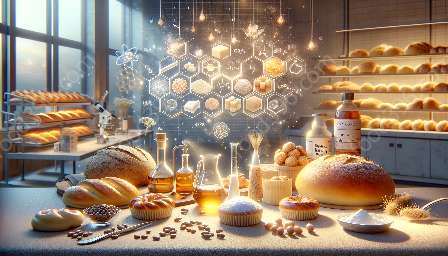Baking is both an art and a science, and understanding the role of leavening agents and chemical reactions is crucial to achieving the perfect baked goods. In this article, we will delve into the fascinating world of double-acting baking powder, its significance in baking science and technology, and how it contributes to the chemical reactions that result in delectable treats.
Leavening Agents in Baking
Leavening agents are essential ingredients in baking, responsible for producing the light, airy texture in various baked goods such as cakes, muffins, and quick breads. These agents work by releasing gases that expand during the baking process, creating air pockets that contribute to the texture and volume of the final product.
There are several types of leavening agents, including biological agents like yeast, which produce carbon dioxide through fermentation, and chemical agents such as baking powder and baking soda, which release gases through chemical reactions.
The Role of Double-Acting Baking Powder
Double-acting baking powder is a popular leavening agent used in baking, known for its unique dual-action mechanism. Unlike single-acting baking powders, which release gas upon moisture activation, double-acting baking powder releases gas in two phases: once upon contact with moisture and again during the baking process when exposed to heat.
This double-action characteristic of baking powder makes it particularly versatile, as it provides leavening throughout the entire baking process, resulting in consistent and predictable outcomes in baked goods.
The chemical composition of double-acting baking powder typically includes an acidic component, such as cream of tartar, and an alkaline component, such as baking soda. When combined with a liquid, the acidic and alkaline components react to release carbon dioxide gas, causing the batter or dough to rise.
Chemical Reactions and Baking Science
Understanding the chemical reactions involved in baking is fundamental to mastering the art of baking. In the case of double-acting baking powder, the chemical reaction occurs between the acidic and alkaline components, resulting in the production of carbon dioxide gas.
Once the baking powder is mixed into the batter or dough and exposed to moisture, the acid-base reaction begins. This reaction generates carbon dioxide bubbles, which become trapped in the gluten network of the batter or dough, causing it to rise and expand. During the baking process, the additional release of gas from the second phase of the double-acting baking powder further contributes to the expansion and structure of the final baked product.
Applications in Baking Science and Technology
Double-acting baking powder plays a critical role in the realm of baking science and technology, offering remarkable effects on the texture, volume, and overall quality of baked goods. Its consistent and reliable leavening action makes it a staple ingredient in a wide array of recipes, from fluffy cakes and scones to tender biscuits and pancakes.
Furthermore, the dual-action nature of double-acting baking powder provides bakers with greater control over the timing and extent of the leavening process, allowing for more precise and tailored results in various baking applications.
Conclusion
Double-acting baking powder stands as a shining example of the harmonious blend of chemistry and culinary artistry in the world of baking. Its pivotal role as a leavening agent and its distinctive double-action mechanism make it an indispensable component in the realm of baking science and technology. By comprehending the science behind double-acting baking powder and its chemical reactions, bakers can elevate their skills and create delectable baked goods that are both scientifically sound and delightfully delicious.


